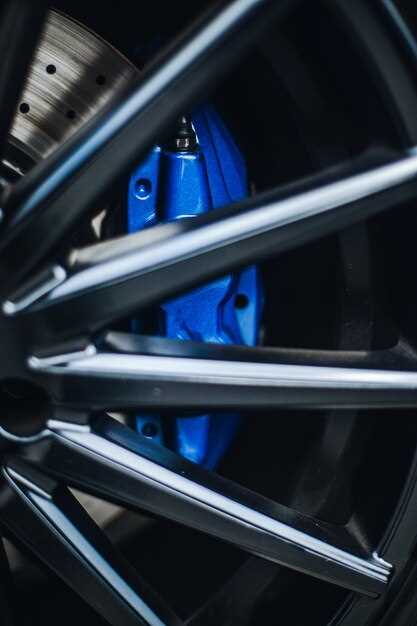

Upgrading to 20-inch wheels for your Mustang can significantly enhance both the size and visual appeal of your vehicle. However, this modification comes with its own set of advantages and disadvantages that every car enthusiast should carefully consider. While larger wheels can improve the car’s overall aesthetics and provide a sportier stance, they also have implications for handling, ride quality, and performance.
One of the primary benefits of 20-inch wheels is their potential to improve handling. The increased tire contact with the road can enhance grip, allowing for better cornering and stability during high-speed maneuvers. This translates into a more responsive driving experience, which many drivers find appealing. Furthermore, larger wheels can accommodate wider tires, which can further bolster traction and performance characteristics.
However, the upgrade is not without its drawbacks. One significant concern is the potential for a harsher ride quality. Larger wheels often mean thinner tires, which do not absorb road imperfections as effectively as their smaller counterparts. As a result, drivers may experience a bumpier ride, particularly on uneven surfaces. Additionally, the increased size can lead to greater stress on suspension components, potentially affecting the vehicle’s longevity over time.
Impact on Handling and Performance with 20-Inch Wheels

Upgrading to 20-inch wheels on a Mustang can significantly affect both handling and performance. The change in size can lead to various advantages and disadvantages that every Mustang owner should consider before making the switch.
- Improved Handling:
The larger wheel size can enhance cornering capabilities. This is due to the larger contact patch provided by wider tires, which improves grip on the road.
- Reduced Sidewall Flex:
20-inch wheels typically come with lower-profile tires. This results in less sidewall flex during aggressive driving, which can lead to more responsive steering and stability.
- Weight Considerations:
While larger wheels may provide better handling, they can also increase unsprung weight. This affects acceleration and braking, potentially diminishing overall performance compared to smaller wheels.
- Ride Comfort:
Lower-profile tires may lead to a firmer ride. Drivers may experience a harsher impact from road imperfections, which can compromise comfort during daily driving.
- Possible Impact on Braking:
While improved traction may enhance braking performance, the increased weight and size can affect the braking distance, especially under heavy loads or aggressive driving.
In conclusion, the impact of 20-inch wheels on handling and performance can be beneficial, yet it comes with trade-offs regarding comfort and weight. Careful consideration should be made to align personal driving preferences and expectations with the characteristics of larger wheels.
Comparative Analysis of Ride Comfort vs. Wheel Size
The relationship between ride comfort and wheel size is a critical aspect for enthusiasts considering a Mustang 20-inch wheel upgrade. Larger wheels, such as the 20-inch options, tend to result in a stiffer ride due to the reduced sidewall height of the tires. This can lead to improved handling and cornering performance; however, it often comes at the cost of comfort on imperfect road surfaces.
When examining ride comfort, the size of the wheel plays a significant role. Smaller wheels, like 17 or 18 inches, generally allow for taller tire sidewalls, which can absorb road impacts better. This cushioning effect translates into a smoother driving experience, particularly over rough terrain or during daily commutes. Conversely, the larger 20-inch wheels can transmit more road noise and vibrations into the cabin, impacting overall comfort negatively.
Additionally, the increase in wheel size not only affects comfort but also changes the vehicle’s dynamics. With larger wheels, the weight distribution and center of gravity are altered, which can lead to improved traction and stability during aggressive driving. However, the trade-off may manifest as a harsher and less forgiving ride, especially under less-than-ideal road conditions.
In conclusion, while upgrading to 20-inch wheels can enhance performance characteristics, it may compromise ride comfort for everyday use. Potential buyers must weigh their priorities carefully, considering how wheel size affects the balance between sporty handling and the comfort needed for daily driving scenarios.
Installation Considerations and Compatibility Issues

When upgrading to 20-inch wheels for your Mustang, there are several installation considerations to keep in mind. First, ensure that the wheel size is compatible with your specific Mustang model and year. Different generations may require different offsets and backspacing to avoid clearance issues with the fenders and suspension components.
Another critical factor is the weight of the new wheels. Larger wheels can add additional unsprung weight, which may affect handling characteristics. It’s essential to select lightweight options that do not compromise performance. Also, consider the tire size that best complements the 20-inch wheels, as this will impact the overall ride quality and responsiveness.
The installation itself might require specialized tools and expertise to ensure the correct fitment. It is advisable to have a professional handle the installation to avoid potential problems such as misalignment or instability while driving. Furthermore, after upgrading, it’s crucial to check the alignment and balance of the wheels to maintain optimal handling.
Finally, ensure that your braking system can accommodate the larger wheels. In some cases, a brake upgrade might be necessary to maintain performance and safety standards. Overall, being aware of these compatibility issues and installation requirements will help ensure a successful wheel upgrade process.






